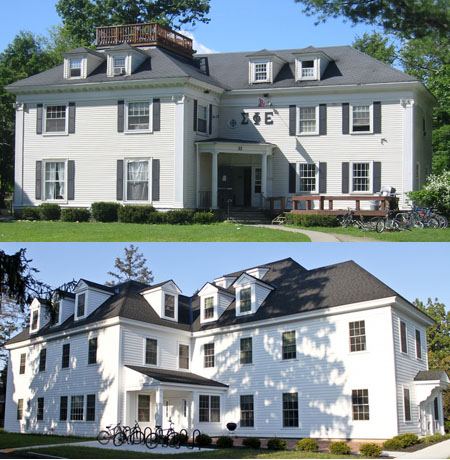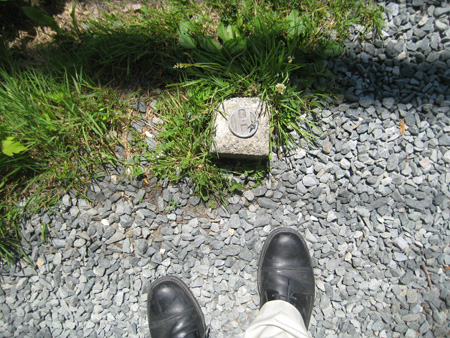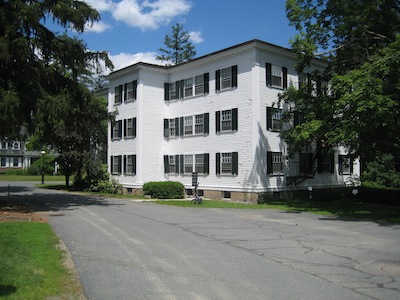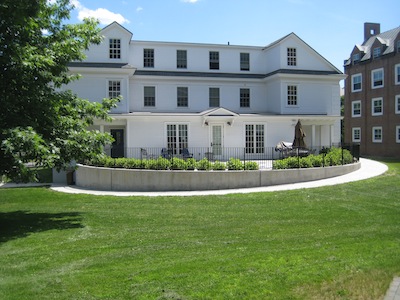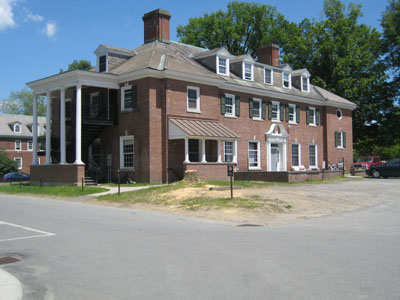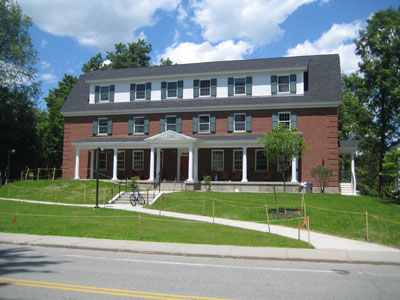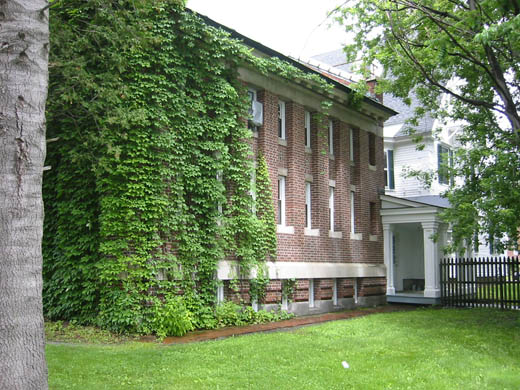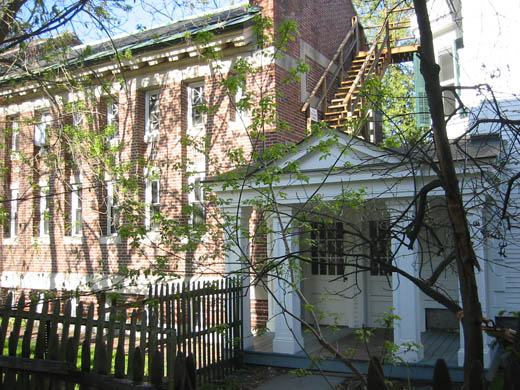The Dartmouth reports that the college is planning to build a new sorority house on Occom Ridge in the gap between Epsilon Kappa Theta and Delta Delta Delta (Ridge House).
The house will be built for the Kappa Delta sorority during the fall of 2014.
—–
[Update 06.10.2013: The announcement of the Trustees’ approval (Dartmouth Now) clearly puts the house at 1 Occom Ridge. That suggests that the house will face the street. The two halves of the Tri-Delt duplex, originally numbered 1 and 3 Occom Ridge, apparently will be known collectively as no. 3.]
[Update 06.09.2013: The March 12 Planning Board minutes (pdf) state that the house, with 23 single rooms, will be built “immediately south of the Roth Center.” Does that mean it will be in the interior of the block rather than facing the street? Ugh.
This aerial shows how much space is available southwest of Tri-Delt and how suburban a house would be if it were marooned in that clump of trees.]
